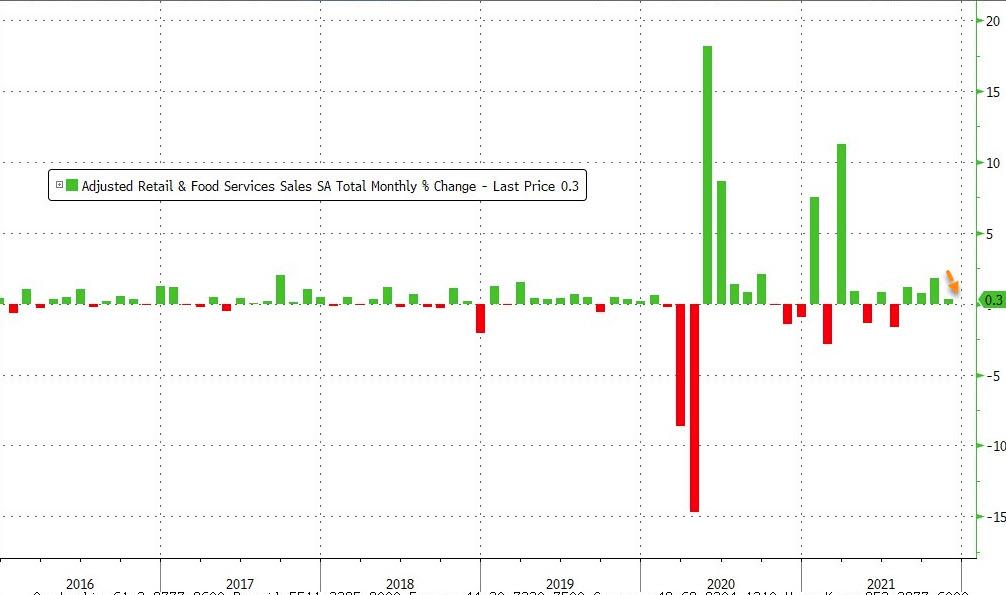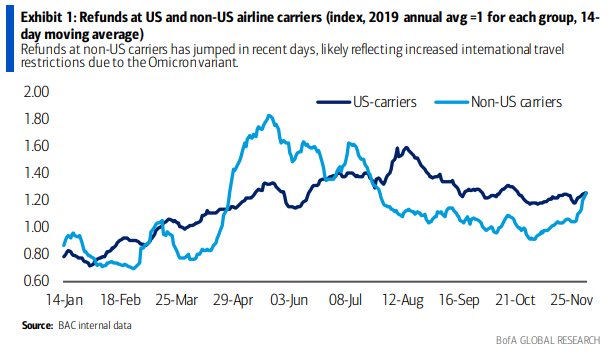US retail trade rose 0.3% from a month earlier in November after surging 1.8% in October and well below market expectations of 0.8%, adding to signs of slowing domestic demand amid the fastest inflation in decades. The so-called core retail sales, which correspond most closely with the consumer spending component of GDP, edged down 0.1% in November. Receipts were up at building material and garden equipment dealers, food and beverage stores, gasoline stations, clothing stores, sporting goods, hobby, musical instruments and book stores, and restaurants and bars. US retail trade excluding autos rose 0.3% in November, following a revised 1.8% growth in October and missing analysts’ estimates of a 0.9% increase, according to the US Census Bureau. However when we look from a broader perspective, retail sales are actually 21.6% higher compared to February 2020 as incomes rose in aggregate thanks to the stimulus cheques and extended and uprated unemployment benefits.
 Today's retail sales figures came in well below analysts' estimates. Source: Bloomberg via ZeroHedge
Today's retail sales figures came in well below analysts' estimates. Source: Bloomberg via ZeroHedge
Start investing today or test a free demo
Create account Try a demo Download mobile app Download mobile appOn the other hand, today's weak data may reflect the pulling forward of holiday sales as many US citizens started their holiday shopping early to avoid empty shelves caused by the supply-chain issues. Also recent data from Bank of America regarding the aviation sector shows that consumer caution is returning in the wake of the rise of Omicron.
 Source: BofA
Source: BofA
Therefore taking into consideration today's weak data and lingering concerns about the omicron, the Fed is unlikely to surprise markets with a more hawkish bias in relation to interest rate hikes in 2022.

